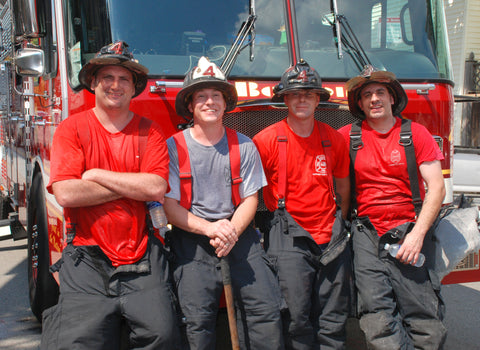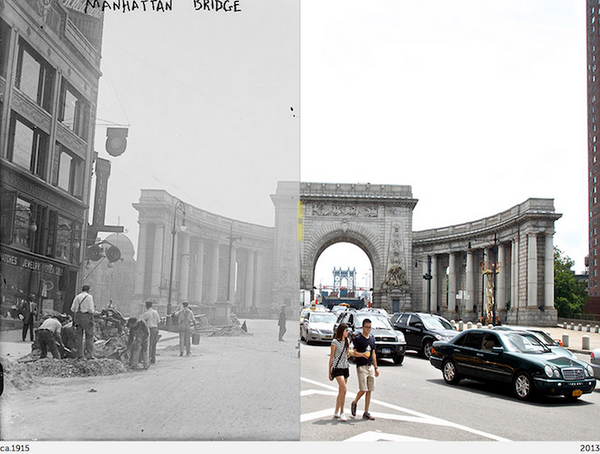Hook and Irons
How To Lose Good Firefighters In 10 Simple Steps September 06 2015, 24 Comments
During my time as a firefighter, I have enjoyed the best and suffered the worst a firehouse has to offer. I have met some of my best friends and endured months with people I wouldn't trust out of my sight. With that in mind, I thought I would compile a list--an easy to follow guide for the dirtbag, to ensure that any good firefighters that bid your station or who are placed in your house will not want to stay. Just follow these 10 easy steps and you'll be sure to send those valuable employees packing and looking for greener pastures.
1. Don't eat dinner together. Crawl into the dark nooks of your firehouse and only come out to eat alone. Bring your own special vegan-soy-protein infused meals, separated into individual tupperware containers and stored in one huge collapsible cooler that takes up half of a refrigerator--and make sure to never share. Take turns in the kitchen, one at a time, cooking and preparing your own personal meal and eat by yourself while you scan your Facebook page dreaming of other places you'd rather be at that moment.
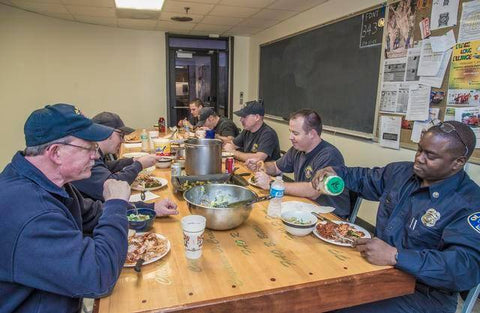
Olathe FD
Eating dinner--breaking bread with your co-workers is sometimes the only chance busy houses have to sit and converse and to strengthen the bonds that good friends and firefighters have. Many of the problems I've had, have been put into perspective right there while we joked and laughed and took comfort in each others lives and stories.
Side note: If you have a special diet because you just have to get on that firefighter calender or you realized that gluten makes you weepy, then you can still sit and eat together. You can eat the part of the meal that is acceptable to you and supplement it with your own. The important part is that you make the effort and you see the value of a shared meal with some of the most important people in your life.
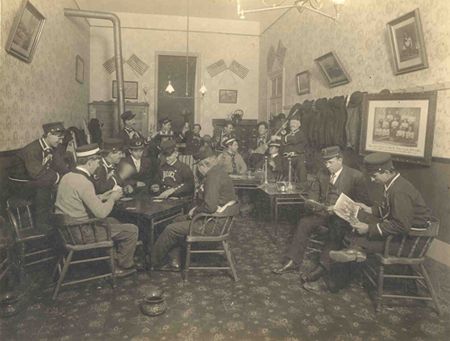
2. Do exactly what is expected of you and nothing more. Look and see who is doing less and who is getting more than you. See who drives the truck more than you. See who sits in the better seat at the dinner table. Make sure you show up right before shift change and whatever you do, make sure to never hold over.
These people are personal behavior accountants, bean-counting the actions and in-actions of all their peers. They can recall with absolute clarity what each person has or has not done. The problem with these types is they never put the magnifying glass on themselves.
Good firefighters understand that cameraderie comes when you are doing more than is asked, when you are helping your brother with the most mundane tasks and when you suffer, execute and surmount obstacles together. Trust comes after that.
3. Stop Training. Complain at drill time. Make excuses. Drag your feet. Whine and roll your eyes when you do the same drill again that you've been doing for the last fifteen years.
There will come a point in everyone's career when they get comfortable--when they feel like they've got a good handle on their job. And that is all well and good, but a good firefighter is always looking to be a little uncomfortable. He wants to be challenged. He wants to learn something new, even the smallest bit of information that may make his job a little easier and a little safer.
Training provides discovery. Training provides purpose. Training provides growth. You should always try to remain a student of the fire service. The day you finally graduate from the school of fire should be your first day of retirement.
4. No Recognition. No matter what happens. No matter what the new guy does, do not compliment him. Do not recognize the effort. He's just doing his job, right?
Verbal recognition is one of the only ways we as officers and we as peers can reward firefighters. We can't offer them monetary incentives or days off from work. We can't sweeten their retirement package, but we can tell them they did a great job on the nozzle, or that they blasted through that security door like lightning. A compliment from someone you respect satisfies more personal needs than we would care to admit.
In this line of work we often fail even when our efforts are outstanding. The house burns, the person dies, and there is no effort that could have changed the course of what happened. Sometimes the only way we can make it better is by recognizing the efforts of others (even in failure) and giving them hope that the outcome won't always be negative.
5. Micro-manage. One of my friends and one of the best drivers on our department was once told by his new chief not just to catch a hydrant, but 'how' to catch a hydrant at a fire. After the fire, the order that was given and the way it undermined his knowledge and his skill, bothered him so much that he gave up his bid a week later, citing that, 'if he is going to tell me how to do my job at a hydrant, then he can get someone without a brain to do it for him.' At the time, I thought the move was extreme, but later I realized that he knew that particular Chief would never trust his efforts and he would never feel happy with his work. That Chief has only needed two or three of these steps to lose almost all his good firefighters.
Good firefighters want to be given orders, but they also want to do it themselves. They don't want you to hold their hand while they do it. They want the opportunity to show you, 'I got this. Don't worry.'

6. Ignore Feedback. You're the senior man, right? You're the officer, right? If you wanted feedback from the junior guy, you'd ask for it.
When a firefighter notices something is wrong, don't just ignore him. When he tries to show you a different way to do something, don't just blow him off. If they want to try something new on an evolution or deployment try it out, let him discover what you may already know. Who knows, he might even be on to something and you may not only improve the evolution, but improve the cohesion of the crew. Sometimes the best you can do here is to provide a framework for them to try out their theory or suggestion. And if you do shoot down the idea, at least you took the time to consider it and try it out.
Side note: Regularly ignoring feedback is a great way to keep firefighters from speaking up on emergency scenes. If their opinions are not valued in the station, then why would they be considered during a time of danger? There are firefighters who will follow you knowingly into a bad situation because it's their only way of saying, 'he doesn't listen to me anyway, so I might as well let him f*** up.'
7. Be dishonest. Say one thing and do another. This is a fantastic way to lose a good firefighter. If you can't be trusted, there really isn't much more to say.
8. Do not support growth. Belittle your firefighter. Use training time to show how terrible they are when they make a mistake. Do not work to make them better. Don't let them act as officers and don't support outside education.
9. Sabotage the efforts of others. If someone takes on a project to improve the truck or the station, tell them 'they are all ate up,' or tell them to chill out, the department is not paying for that. Better yet, tell them they're wasting their time by going to off-duty training.
Photo Courtesy of Bill Noonan
The best firefighters are supporters. They are team players. Remember you're not always going to be 1st in. You're are not always going to be the guy carrying the baby from the burning building. Every football team only has one quarterback, but it is the effort and the support of the whole squad that brings the victory. The great firefighters are often the unsung heroes, the never-mentioned guys that made the fire go so smoothly. Take pride in that.
If you drag your feet when you're third due. If you belittle the efforts of the young officer putting on his first drill, then you're well on your way to getting rid of that great firefighter.
10. Disrespect yourself, your crew and your firehouse. When you're off duty, act like an idiot. Be selfish. Make the same mistake over and over again. Do something stupid and when you come back to work be stubborn and arrogant. Whatever you do, don't apologize.
Humility seems to be one of the most difficult things for a firefighter to cultivate. Maybe because we have to be confident to do what we do, but eating a slice of humble pie after your blow-up the shift before earns a lot more respect than pretending it didn't happen at all.
If you're looking to ruin your station, if you're dying to get rid of that motivated guy, and if you'd rather hide in your cube the whole day, follow these simple steps and you'll be well on your way to finding more people that are just like you.
A Fireman Gives Thanks November 26 2014, 1 Comment
This holiday, I've compiled a short list of things I am thankful for. Some I've taken for granted in the past and some I hold dear to me every day. These are in no particular order of importance:
1. The Halligan: Sixteen years into this career and I'm still amazed all the time at how Hugh Halligan created a nearly perfect tool. It's a step, a pry bar, a striking tool and I'm pretty sure if you're very careful you can use it to play vinyl records and remove splinters.

2. My Crew: I've been the bid-in Captain at Aerial 11 for a year and have been blessed to fall in with the best group of guys an officer could ask for. My crew is mature. They are seasoned and they are true professionals. They are the perfect mix of everything a fire truck needs. I've got a car buff, a grease monkey, a joker, a common sense guy, a straight talker, and a bulldog. Truth is, neither one is any of those by himself, but together they are all those things and more.
3. Coffee: This is my life-blood and is as part of my daily routine as waking, sleeping and eating. I am thankful for coffee. I am thankful for the Bunn coffee maker in the station and I'm thankful of the never-ending supply that is on hand. I'm also thankful that it's so good for you, because truthfully, how can anything this good be bad.
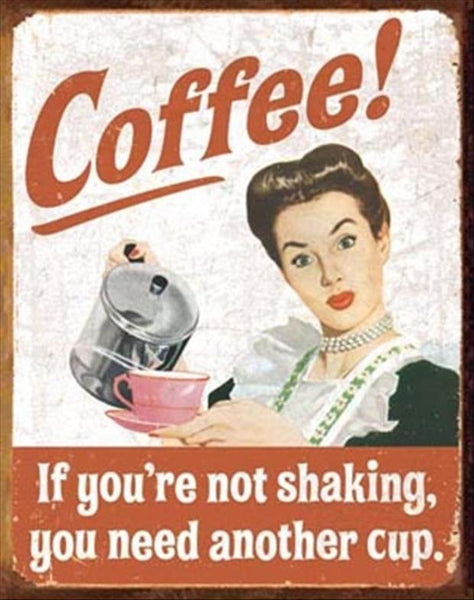
4. The Chief: This is something I had always taken for granted until this year. Truthfully, you can't appreciate a truly great chief until you've experienced a truly terrible one. Unfortunately, our battalion is on it's fifth Chief in 12 months. Most have been mediocre, one has been terrible and all of them have not hidden the fact that they would rather be somewhere else. So, to Chief Indy Morgado, Chief Mike Simon, Chief Danny Gonzalez, I say thank you. To the others, I say that you truly have done a disservice to the rank. I've got more to say about this, but I'll save it for a future blog.
5. The Federal 'Q': Really is there a sweeter sound to a firefighter?

6. The Kitty Burger: Many an afternoon, morning, and evening and late morning and early evening hunger pains have been cured with the kitty burger. Also known as peanut butter and jelly, it is the official power bar of the fire service. It is the protein powder for the guys that don't shave their arms and it is the perfect snack for firemen, because it can be prepared in under forty-five seconds and consumed on the way to a call. If you're looking for a light version of this sandwich, take one piece of bread--pb on the upper half, jelly on the lower, then fold. Kitty taco.

7. Youtube: This is a constant source of entertainment and education in the fire station. Youtube has done more to bring the fire service together than any other thing I can think of. It still amazes me that I can watch a fire from LA County, click a few more times and watch the brothers in Houston tackle some serious business. Then click a few more times and watch the Crazy Hot Matrix. Youtube has proven to me that firefighters across the country are largely the same--a little crazy (bout half a bubble off center), damn funny, and sometimes heroic.
8. Modern Fire Boots: When I started, we were issued the yellow martian moon boots--the rubber, guaranteed to slide off a roof, unable to leg lock a ladder boots. I thought that was as good as it got until I tried on my friend's Haix. Wow! I will never go back and I'm happy to tell anyone that it will be the best money you ever spend in the fire service.

9. The Firehouse Dinner Table: It has been said before in many places, but the dinner table is where stories are told, friendships are forged, lessons are learned, and the brotherhood is born. I am thankful for dinner with the guys. On some days, it is the only time we all get to be together. It is the place where I have had the most laughs and felt most at peace these last sixteen years.
10. My Family: I know, this one goes without saying, but I'm going to say it anyway. You should feel just as sad to go to work as you are excited and you should be just as ready to leave in the morning as you are ready to hang for one more cup of coffee. You should know that while you're away, your spouses are juggling everyday problems that are much more frustrating, long lasting and difficult than any fire you'll ever fight. You are able to be who you are because of them and your success depends on their support.
Happy Thanksgiving everyone. I wish you all success, laughter, and fire. The ones you have to put out and the ones that drive you to be better than you are in 2014.
-George
Tools Of The Trade - Birth of 'The Hook' November 25 2014, 2 Comments
Earlier this year while visiting a neighboring firehouse, I saw that they had displayed a very cool shadow box with all of the different knots used in our fire department. I really liked the idea and all of the other 'knot boards' I've seen. I thought that it would be nice to see a board with many of the different types of hooks used in the fire service around the country laid out in a 'knot board' style so the viewer would be able to see all the different variations next to each other. As far as I knew, I had never seen anything like this before.
The first problem was finding the right designer who would be willing to research and sketch the different hook variations and lay them out in an interesting manner. I chose Adam Weaver for this project because not only is he a very talented hand-letterer, he is also extremely talented at creating authentic and original illustrations. The only problem was that Adam is not a firefighter. He did not know how important this tool is to us or it's many uses. How could he feel as passionately as I do about our tools and our history?
Fortunately, I've learned that Adam is a life-long student of many subjects and after the Keys To The City project, I know that he relishes learning the finer details of a subject rather than the broad strokes.

First, we set out choosing which hooks to use. I tried to pick not only the most popular hooks, but ones that are unique to certain parts of the country. After we settled on the subjects, Adam got to sketching. We tried to never stray too far from the 'knot board' feel. I wanted the design to be educational as well as visually interesting.

In the end, I feel Adam created a design that is truly original and unique--a design that I hope most firefighters would be proud to own.
I want to thank Adam for being so patient and taking the time over these past months to learn so much about our world. We have become fast friends and I hope Hook and Irons can tempt him into creating more designs for us in the future.
As for me. . . Well I hope you guys dig all the care, dedication and time that went into this one. And, as I always say, 'Wear it with pride.' And this time, since we're offering a limited edition print, you can 'display it with pride' as well.
A Brief History of the Pompier Ladder May 18 2014, 19 Comments

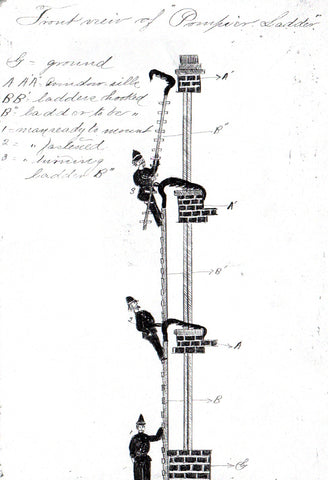
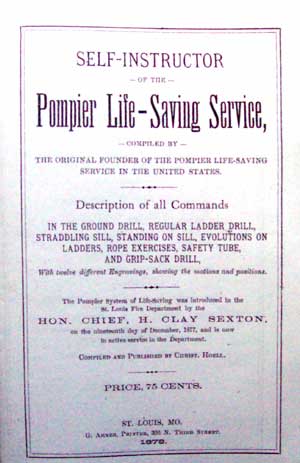



We're All Zombies, And the Assholes Are Winning May 01 2014, 7 Comments
I've been a little jaded lately--confused and distressed. I haven't been able to put a finger on the pulse of it. It's everywhere and nowhere. It doesn't feel like pressure or anxiety, or doom, or fear--just sadness really. But I'll hold off on that for a minute.
There are things I love with a passion. I'm no different than most of you and the older I get, the more I realize how similar I am to most of my peers. So my list is probably a lot like yours.
In order: I love my family to pieces. My wife and my children are my reason and my life. There is no stronger statement. Next, I love the fire service and my department. The feeling is not the same as the ones I have for my family, it's more like the feeling of possessing a valuable but hidden gift. Maybe like finding ten dollars in the gutter and putting it in your pocket--that feeling like you've got something lucky and special that chance and good fortune brought you. The only difference is the ten spot is always there. Every morning when you put your work pants on, and shove your hands in your pockets, there it is again, the feeling of it--the luck of it. It never goes away for me. I'm lucky to love my work, my job and my craft.

I love other things as well, but this is the core of it. Everything else depends on these two things for me.
So why do I feel the way I do today? Why do others tell me they feel the same in different ways? There is something, maybe an up-welling you could call it. Maybe a shift. There is definitely a change. Everyone feels it and no one can quite put their finger on it. I know this because I see good people all around me grasping desperately for it, trying their best to keep tradition, goodness, and the brotherhood alive. You can find them and their followers on outposts at the busiest and best firehouses and all throughout the internet, but it doesn't seem as if we're winning, what it feels more like is comfort knowing you're not alone, like maybe you've found some other souls that realize the ship is adrift.
This is the difference.
One of the many things that Dads can do for their sons is point out who the assholes are. I know my Dad did. We'd get cut-off by a driver with road rage and my Dad would go, "Look at that asshole." Or we'd be at a job site and he'd point to the lazy guy sitting by the cooler and he'd say to me, "See that asshole, sitting down while everyone else is working." Or I'd hear the stories about shitty officers at the firehouse, self-serving 'assholes' who didn't care about the guys or the job, and it was all very clear. You could see the jerk, you could compare him to the others and you had a viable example of somehow or some way that you shouldn't be. And as best you could, you learned to avoid these types and not become one yourself.
Now, with the internet, texts, e-mails, tweets, Facebook posts, audio and video recordings and every other immediate thing out there, the assholes are lining up, wreaking havoc, hiding behind their curtain and are never accountable to the face or name of the person they're slamming. They line up as virtual vampire armies to weigh their 'very important' opinions and suck the life out of someone. They get all the feeling of power without ever risking looking someone in the eye and witnessing the pain they cause. No, they get to sit with their crooked spines and downcast eyes and type the thoughts that mostly would be better locked up.

Before e-mail
I was lucky enough to be hired before computers took over the fire service. I knew who the assholes were. It didn't mean I didn't respect them, hell, sometimes I respected them more because sometimes you have to respect the assholes that tell it 'like it is,' and are not afraid to hurt your feelings. Because the next time you work with them you wanted to be able to look them in the eye and say, 'yeah, I got it.'
The fire service was clear and it was easy. I loved the directness--the black and white of it. Do this. Don't do that. Do it this way. See that guy, he's a real POS, but he is the guy you want next to you on the fire ground. And the Chief, well he was the boss and he fixed things with just a few words and he stayed out of the guys way and when he asked for something, you jumped on it.
After e-mail
After e-mail and the introduction of electronic communication the fire service changed. I've learned and still learn alot to this day about it, but I've settled on some personal truths.
- Firefighters (at least the ones you respect) are the types of people who like to be told, face to face what you want--what you like and what you don't like. They want to be treated like adults and spoken to face to face, even if the news is tough. I'm not sure how they do it in the private sector, but I believe we are the last breed of an older generation that values actions and handshakes, slaps on the back and an atta' boy every now and again.
- Firefighters are generally terrible writers, that's why they carry axes and not pens. With that truth established it is safe to say that most firefighters should save writing e-mails and texts for those dire circumstances when they are unavoidable. I have found the e-mail to any one person to be almost completely avoidable and after learning a few hard lessons I now only write e-mails to groups to deliver a message.
- When a firefighter receives an e-mail directed at him and only him, he automatically gets defensive. We learn early in the fire service that anything written can be used against you later. So, a seemingly innocent e-mail is often interpreted quite differently.
- Leadership or management by electronic communication is a fallacy, it is often a joke and it is the laziest way to lead. Furthermore, it is almost always a recipe for failure.
It is easy to get sucked into the computer. It is easy to get drawn into the black and white of numbers and so-called 'accountability tracking'. It's easy to click the mouse and pass judgement, make assumptions and learn 'everything you need to know' instantly, but you're missing so much.
The reasons for the numbers and the numbers themselves all come from people that are still out there sweating and trying their best to make it work. They're out there struggling, making the best of the situation. Get out there with them, talk to them, ride with them, empathize with them, then be tough, be a jerk, be nice, be funny. Just don't be the asshole behind the curtain with the crooked spine and the downcast eyes.
Those guys have yet to fix anything.
-George
www.hookandirons.com

Fireman Jim Flynn September 08 2013, 8 Comments
On February 13, 1917 Fireman Jim Flynn entered the ring with a young up-and-comer Jack Dempsey. Jim Flynn who had passed the height of his career charged to the center of the ring and quickly sent the Manassa Mauler to ground with a devastating right. Twenty seconds later, Dempsey was still trying to find his feet. Here is an account of the knockout.
'With Dempsey still bent over and walking toward Flynn, both forearms and gloves covering his face, Flynn rushed again. The Pueblo battler gave Dempsey's head a quick shove toward his right and sent a short right hand hook through Dempsey's guard and straight to the point of the chin. (Salt Lake Telegram)
Dempsey was down 10 seconds in to the bout.'
That quick, embarrassing loss was the only time in Jack Dempsey's storied career (66-6-11) that the future champion was ever knocked out and it was the highlight of Jim Flynn's career, a fighter who 'fought them all' but never earned the heavyweight title. For a time, Fireman Jim Flynn was the best hope of defeating the feared Jack Johnson but was never able to best the 'Galveston Giant' in three tries. Jim Flynn was famous however for knocking out aspiring contenders with such neatness that he became known as the 'Destroyer of Hopes.' Jim Flynn ended his career with 47 wins, 41 losses, and 17 draws.
Early Life
Jim Flynn was born in Hoboken, NJ with name Andrew Chiariglione. He was actually of Irish-Italian descent, but took the name Jim Flynn for professional purposes as the Irish were some of the most devoted boxing fans at the time. When Flynn was a young man, the family moved to Pueblo, CO where he took up railroading and became a fireman for the Pueblo Fire Department and the Denver and Rio Grande Railroad. Jim Flynn remained with the fire service throughout most of his boxing career.
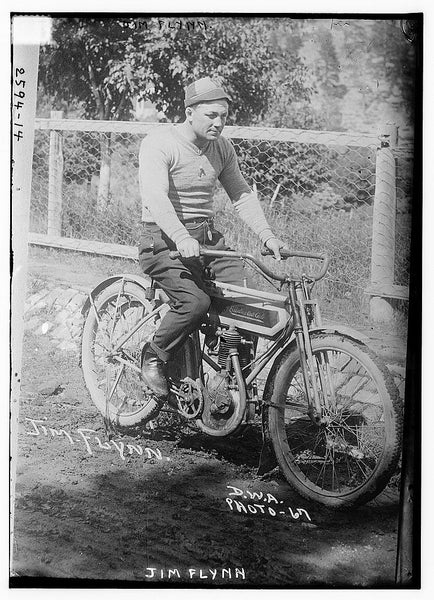
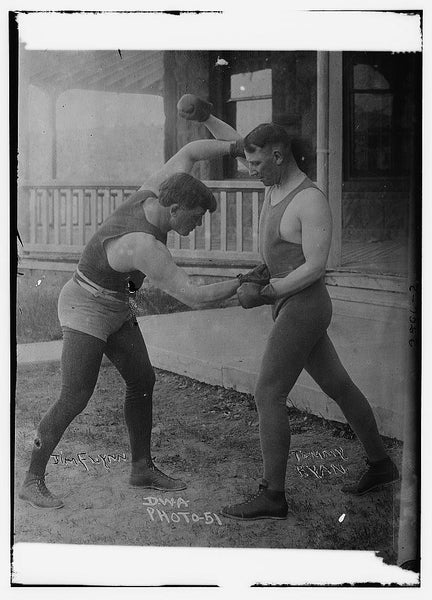



Inspiration
While researching ideas, the legendary knockout of Jack Dempsey, the Manassa Mauler combined with the workman-like boxing career of the underdog Jim Flynn inspired us to create a design honoring Flynn for Hook & Irons. Choosing the the designer was easy for this one. Steve Wolf specializes in hand-drawn art and works frequently with different sports topics. Additionally, he is a collector of vintage boxing artifacts and he seemed as excited, if not more, to bring this idea to life. As there is no poster for this event that we know of that still exists, we asked Steve to imagine a poster for the bout using the style of lettering and drawing that was popular at the time. We also asked him to draw his best rendition of Jim Flynn. The final design couldn't be more striking than the photo he worked from. We hope you enjoy the design and the small piece of history where the workman--the fireman--the boxer--the constant fighter--won one for the underdog.
Firewire 8/22-8/29 August 22 2013, 0 Comments
A mostly fire related, semi-occasional, mining of web type stuff.
This week we released 'The Bronx is Burning' tee and so far it seems as if you guys like the shirt as much as we do. If you're interested in learning more about The War Years in the Bronx, here are all four parts of the BBC documentary Man on Fire. Each part is about 12 minutes long and give a true perspective of the time period.
Doing all the research for 'The Bronx is Burning' tee, I've found so many great videos and pictures from the time period. Here are a few more that didn't make the cut from the original blog.

George Steinbrenner, left, gives manager Billy Martin a bearhug and congratulations after the Yankees defeated the Kansas City Royals to take the 1977 AL championship
And the last New York thing I found (I promise) is a very cool before and after comparison to places in NYC.
This is a very interesting photo essay. You can see more by clicking here.
Collab with Ryan Brown from Pursuit of NY
Our new Bronx is Burning tee was designed by Pursuit of NY. They are, about the coolest indie label I've seen in a while. Check em out.
Cool Stuff, you'll Probably Never Need
A homemade adjustable wrench for all you doomsday preppers who are always preparing.
Parting Thought That Pertains To My Frame of Mind During Most EMS Calls
Enjoy your Thursday.
The Bronx is Burning August 18 2013, 3 Comments
The San Francisco Ladder Shop July 17 2013, 22 Comments
As time passes, it seems to me that there are less and less of those things that signify what is great about the fire service. Technology, increased safety, innovation, and time chip away at some of our most beloved symbols. Some changes are for the best and some are not. It's hard to argue the effectiveness of a well placed and expertly thrown aluminum ladder. It's also an easy pill to swallow when they break and can be replaced quickly and cheaply.
But they're not the best for everyone. San Francisco Fire Department has stuck with the wooden ladder for many reasons. First and foremost, there isn't a city in the world that has more high voltage lines running overhead. The city is made up of very steep and very narrow streets that make ladder truck access very difficult. And finally, the wind that whips off the bay is nothing to laugh at. With all that said, San Francisco Fire Department relies heavily on their ground ladders. They need to be heavy and stable. They need to be non-conductive.

They need to be made of wood. And while they are not the only department to use wooden ladders, they are the only department the builds their own ladders.
Since 1917 the San Francisco Ladder Shop has been building, designing and maintaining all the ladders for SFFD. They are the only ladder shop of its kind left in existence--a true testament to how strongly San Francisco feels about its ground ladders. At about $100 a linear foot, the ladders are not cheap, but when they break, these carpenters and craftsmen just repair the broken pieces and put the ladder back in service. SFFD has ladders in service that are over fifty years old and work just as good as the first day they were put into service.
We chose The San Francisco Ladder Shop as our latest Signature Design because of everything they signify--craftsmanship, quality and tradition. SFFD. is rich in tradition and everyone knows them by their helmet markings and their wooden ladders. In my estimation, they protect some of the most difficult urban geography and the most challenging building construction in the country. They don't continue to use wooden ladders out of stubbornness. They use them because they are the right tool for the right place.
When we called up Tom Lane and asked him if he would be interested in designing a shirt that would honor the craftsmen of the shop, he jumped all over it. He knew that he would have to create something that was organic, natural and created by hand. When we saw the finished design we were so happy that we wanted to do something special with it. So we called a small local print shop that deals in fine art and had them make a limited run of 150 prints.
This has been a great project to work on. My favorite yet. We hope you guys like this design as much as we do.
The Flynn Effect April 22 2013, 5 Comments

Much has been written in the journals and periodicals about the new generation of firefighters and how they are different from previous generations--not as worthy, not as smart, and more self-centered. We bemoan how they 'should be' and don't spend enough time getting them where they need to be. Certainly, at MDFR we have seen our share of questionable employees pass through our house. But I won't categorize the younger firefighters by their worst examples as each generation has its share of 'less than motivated' employees. Instead, I find most of the probies to be intelligent in ways that often surprise and sometimes humble me. And I have no doubts that tomorrows firefighters will be smarter than I am. But I do occasionally find them to be lacking and disappointing in ways that I've come to understand is a result of today's society.
But first let's talk about how they're smarter:
James Flynn is a researcher from New Zealand who discovered and coined The Flynn Effect. The Flynn effect is an explanation for the steady rise in IQ scores from generation to generation. He contends that the rise in IQ scores proves that this generation is more intelligent than the generation before and so on and so on. The effect is caused by each generation growing up with the increased benefit of looking at the world with 'post-scientific' spectacles. We classify, we analyze and we think more abstractly. In general, according to Flynn the rise in IQ scores is largely due to increased reasoning skills. Those increased reasoning skills allow us to solve more complicated problems than the previous generations. Additionally, more time is spent on mental pursuits than ever before. Proof is in the internet, the video games, the tv, the fantasy leagues and so forth.

And I can buy all of this. I believe James Flynn and hope he is right. I want my son to be smarter than me and I want him to benefit from the research and work of my generation. In the station, what I observe from my young guys allows me to generally agree with the Flynn Effect although as a good Captain, I will never admit that any of them are smarter than I was at their age. I can say I honestly spend very little time explaining the ideas of fire growth or the incident command system. These concepts and the importance of understanding them seem clear to most of the young guys. In fact, these are the things that most of the young guys cling to and quickly understand. I can also say that most of them can reason through tactics and strategy scenarios as well as most of our experienced chiefs. These are the areas that truly impress me.
The problem in the fire service right now is something I'll call the 'Y Gap'. I call it the 'Y Gap' because this is the generation that seems to suffer the most from this problem. The 'Y Gap' is, the distance between intelligence and physical skills. If the distance is short, you probably have a good firefighter on your truck. The good firefighter is intelligent, shows good foresight and has good hands-on skills. They can swing an axe, work a saw and don't buckle with the fear of heights. Additionally, they know when to put these skills to use. The 'gap' that I see is an increase in intelligence and a decrease in physical ability. Many of our recruits have never mowed a lawn, changed their own oil, worked a chainsaw, or swung a hammer. Instead, they pay someone to mow their lawn, change their oil and if they need to nail something they use a nail gun instead. We receive these guys without the base knowledge of mechanics and form used to do so many things on the fire ground. This is the area that most of the new guys suffer and the area that the academies do not focus on. So we get guys who can tell us the phases of fire, but have no idea what a two stroke motor is.
The answer is to go back to the beginning--take your probie to the saws and teach them why it's a two stroke engine and how it works. Then, let them cut scrap metal until they look like their not scared of the saw anymore. After that, challenge them to make cuts of increasing skill and so on until they know the saw well enough to cut any material in any fashion you ask. None of this takes intelligence. None of it takes reasoning or analytical skills. What it takes is form and practice and with enough of it you gain muscle memory--and with muscle memory you gain skill. And that is why I will always respect the old guys like my dad, who, while driving to a fire years ago felt the truck die to an idle at his feet. He popped the cab, saw that the throttle spring was gone and replaced it with a piece of the elastic chinstrap on his helmet. He made it to the fire (was last in) but he made it. And he made it there because he has common sense and grew up working on cars and performing a lifetime worth of manual labor.
So, if you are one of these new guys, I suggest you start changing your oil, mowing your own lawn, digging out your own stumps even though your intelligence and reasoning skills might tell you that there is an easier way to get it done. You never know, it just might save your life one day.
-George

Hugh Halligan's Masterpiece Revisited November 28 2012, 9 Comments
When we created Hook & Irons Co. we came up with the Signature Line as way to pay homage to the parts of the fire service that are historically significant-- the parts of the fire service that so many of us feel passionately about. We brainstormed over so many things during those first days, but always, and without question, we were certain that we wanted to create a shirt honoring every fireman's favorite tool, the Halligan bar.

Hugh Halligan on right
Hugh Halligan is an icon of the fire service. With FDNY, he rose to the rank of Deputy Chief and is remembered as a 'fireman's fireman' working on many of the busiest companies in the city. But, he is known best for the tool he invented that is still carried on nearly every fire truck in America. While today's versions may have been refined a bit, and are now built by different manufacturers, they are very nearly the same exact tool that Halligan invented in the 1940's.
The original Halligan tool was made of cross-drop forged from one piece of No. 4140 (high carbon content) steel, and weighed 8 ½ lbs. This was a great improvement in strength and weight over its predecessors, The Claw and Kelly tool. The standard bar was approximately 30” in length, with a 15/16” shaft shaped into a hexagon for grip. The fork was a minimum of 6” long tapered into two well beveled tines. Spacing between the tines allows for a gas valve to be shut off. And stamped into the steel of the forks of the original Halligan tool was Hugh's signature and the letters AM + DG. Chief Halligan was a very religious man and it is widely believed the letters stood for the Latin phrase , Ad Majorem Dei Gloriam or “for the greater glory of God.” This phrase was a favorite of St. Ignatius of Loyola, founder of the Society of Jesus. Pope John Paul II routinely used it in his writings. He would print AMDG in the top left of every page he wrote. The + sign is widely believed to represent a cross.

When creating the shirt, it was important to us to include these elements into the design. We used the original advertisements as inspiration and we picked colors that we thought were as hard-looking as the drop-forged steel of the Halligan tool. The typography is chosen and inspired from the ad, as well as the slogan, "Yes! It is an Ugly Bar." The ribbon at the bottom of the shirt (also taken from the ad) represents the Boston Fire Department who was the first to recognize the genius of the tool and put one on every single truck in Boston.


The genius of the Halligan tool becomes apparent in the hands of a skilled operator and when properly used – provide protection to the arms, hands, and body of the holder during forcible entry operations. Pound for pound, it is the best tool on any rig and paired with a flat-headed axe, the Irons are a Truckie's best friend.
To this day, there are fire companies who still carry and use an original Halligan tool on their rigs. Tools that are nearly 70 years old and still working to this day. Yes, it is an UGLY tool! and yes we are very proud to offer Hook & Irons second Signature Tee--The Halligan Tee.

*All the research for this blog and the t-shirt were done on-line. Information was gathered from a wealth of stories and articles, conversations and forum posts. Thanks to Rob Fisher, Irons and Ladders, and Hugh Halligan's own article entitled, "The Halligan Tool" which appeared in a 1950 issue of WNYF for which most of this research was taken.
Where We Stand October 25 2012, 0 Comments
Today, just over a month after the launch of Hook & Irons we have been overwhelmed by the support received from the firefighting community. We've made connections and friends in ways we would've never suspected, and received help in the most unlikely places.

Most surprising though is the support we've received from non-firefighters, friends of firefighters, and people who just appreciate the fire service. The thing about firefighters is we are a tight bunch and can be pretty exclusionary. Once we become firefighters and join the brotherhood those around us that we love often find themselves on the outside of our war stories and inside jokes. They get a glimpse into our lives and our passion, but they don't necessarily get the 'invite' to be a member.
What we're discovering is that Hook & Irons Co. is for everyone who loves the fire service. It's for everyone who respects the best of who we are and what our profession represents. And when Digital Arts magazine interviewed Tom Lane about our brand we were blown away. It's not just the firefighters that are H&I company members, but graphic artists, history lovers and people who just dig the designs, the brand, and what we all stand for.
And that is what makes us most proud. If you'd like to read the article in Digital Arts, you can click here.
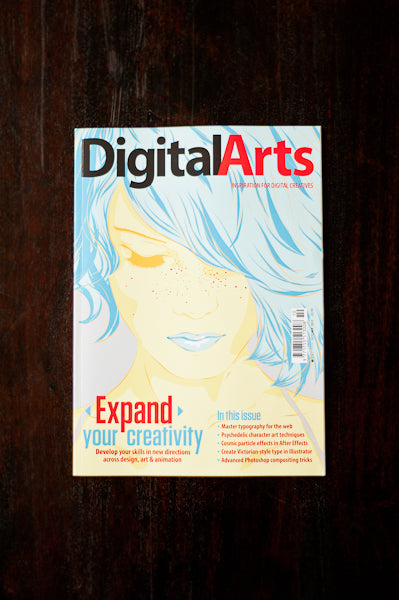
Close the Book October 11 2012, 10 Comments
This week, my department released a very short, simple memo. It stated that on Monday October 8, 2012 Miami-Dade Fire Rescue would no longer maintain a hand written logbook. Perfunctory and to the point, the e-mail was sent to every firefighter in our department.
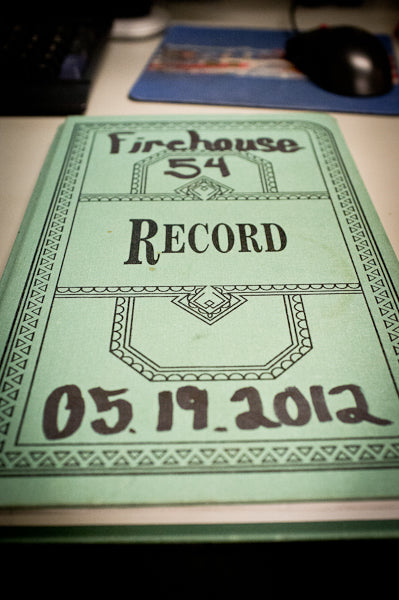
There wasn't a pause, a moment of silence, a last alarm, or even a mention of the tradition we killed in the name of efficiency. No one said a eulogy and no one rang a bell for the thousands of officers that had carefully documented everything that had happened on their watch at their station on any given day in Dade County. To think about the millions of calls our department has run in almost a hundred years is one thing. To see the volumes of logbooks that document every one of them is another.
Why was I so bothered by this change? Every other officer I talked to seemed thankful that this extra bit of work was being lifted from our shoulders. Don't get me wrong, at three o'clock in the morning there is no higher form of drudgery than sitting down and documenting some call that was anything but an emergency. Why, after five day, does this change still bother me? This was something that I had a hard time putting my head around. I'm certainly not a technology hater or a doomsday prepper. I have my iphone in my pocket. I'm on Facebook. I love having the TIC at my side going into a fire. And I'm sure the department has all of our documents secured on servers in fireproof rooms and virtual iclouds. Then it hit me.
Those logbooks--those documents written in so many different handwriting styles, are the only substantive evidence of the daily work we do. Those books are the only thing that you can pick up, feel, read, and see what that day--any day cost us. You can see it in the chicken scratch of tired officers or the careful letters of men who are not used to writing much more than their name. But most of all, you could walk in before your tour, run your finger down the column of calls and see if your brothers had a fire, a rough night, or if the gods were kind and let them sleep.
So this blog is not so much about blasting technology. It is more a warning to consider the things you leave behind in the name of efficiency.

What was lost today? Today I lost that moment in the morning when I sit with my coffee and write the names of each member of my company--that moment where I sit and consider their strengths and weaknesses and how I will use them in different situations. Sure I will still do this. I'll just have to find another way. And for me, writing these names was a reminder to myself, a contract that I am beholden to that states that I'm responsible for the safety of each firefighter at my station. If you don't believe me you can look for yourself and see it written in black and white on the page.
There isn't a blinking screen in the world that can provide that same feeling.
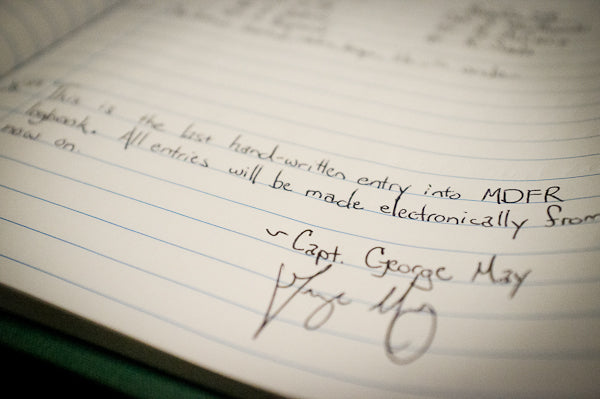
Pay It Forward September 20 2012, 0 Comments
Hook and Irons Co. was born with one philosophy, pay it forward. Our idea was simple; we would help the fire service reconnect with its history using the tenets of early American craftsmanship to build our apparel line. Through meaningful, simple designs, we are creating shirts that are more than shirts, they are historical threads and conversation pieces. Whether you are active, retired, volunteer or just someone who loves the spirit of the American fire service, we want you to feel proud wearing our clothing. Firefighter or not, being a part of the brotherhood is as simple as knowing where we, as Americans come from and honoring that feeling everyday of our lives.
Recently, we received an e-mail that made us proud and re-affirmed our belief in the Hook & Irons project:
" Thank you for making something that makes me feel like I'm still part of the brotherhood. I spent 10 years as a volunteer helping other people because of things I witnessed in my youth. I was not motivated by the paycheck but doing my part of being a responsible human being.
When my time with the fire service was done, I felt like I was on the outside. Sometimes hearing the comments from active firefighters has been very disheartening.
Then one day something happened. I was walking through a store and a young man walked up to me and said, " You don't remember me but you saved my life. At that moment every sore muscle and sleepless night I had on the job was worth it. I do remember you Eddie! I told him. Never in my life did I ever feel so humbled. God saved Eddie that day, I was the tool he used.
-Paul
Paul served on Engine 7474 as a firefighter / EMT at Coloma Lotus Volunteer Fire Department California 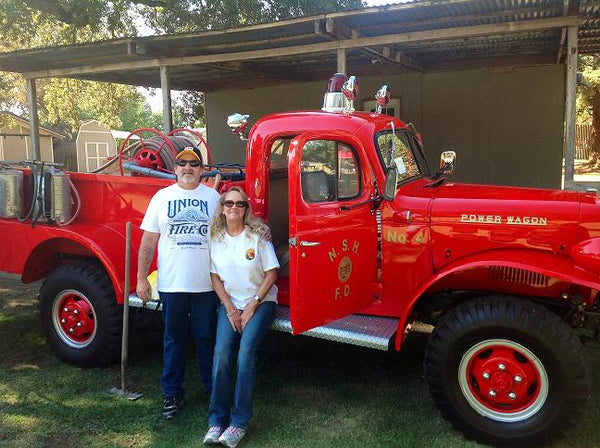
The Eagle Has Landed September 08 2012, 2 Comments
When we sat down with Tom Lane to come up with the Hook & Irons symbol, we threw around a bunch of ideas for our version of the 'Nike Swoosh', but nothing ever beat out the eagle--that proud iconic presence that sits atop most of our helmets. After doing some research on the eagle's history, we took some photographs of the eagles on our own helmets and turned them over to Tom.

The origin of the eagle on the modern fire helmet can be traced to around 1825 when an unknown sculptor created a commemorative figure for the grave of a volunteer firefighter. The figure on the grave was that of a firefighter, emerging from flames holding a sleeping child in one hand and a trumpet in the other. The figure wore a helmet with an eagle on it, which soon became part of the helmets worn by firefighters to this day.
Even though the eagle's practicality is often questioned and technology has devised better ways of affixing a firefighters unit designation to their helmet, this is one battle that time and technology has not won--yet. And we love that.
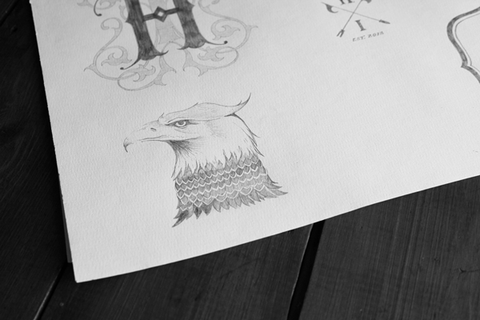
The Hook & Irons eagle was hand-drawn, painstakingly sketched and then inked. Our design was built by hand, embodying everything that is great about the fire service--everything we fear that time and technology might one day change.
Til then, wear it with pride.


